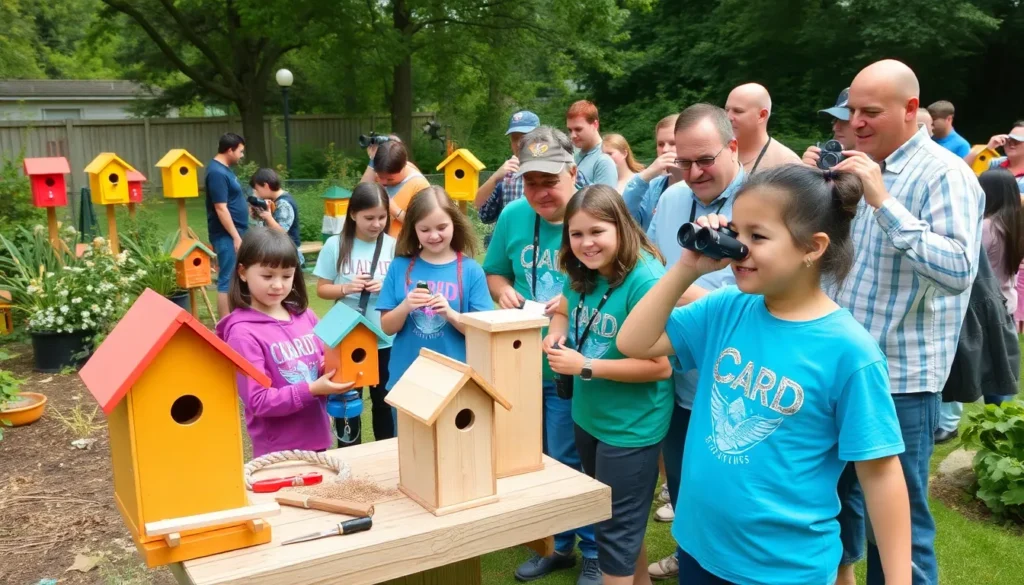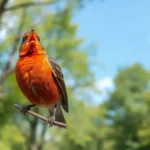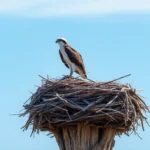We’ve all heard of Earth Day and Industry Wildlife Day, but there’s another celebration that deserves our attention – Bird Day. This lesser-known observance honors our feathered friends who play crucial roles in maintaining ecological balance and bringing joy to our daily lives.
Bird Day isn’t just about admiring pretty songbirds from our windows. It’s a powerful reminder of how these remarkable creatures serve as pollinators, pest controllers, and seed dispersers while facing unprecedented challenges from habitat loss and climate change. Their populations have declined by nearly 30% since 1970, making awareness more critical than ever.
Whether you’re a seasoned birdwatcher or someone who simply enjoys hearing morning chirps, Bird Day offers the perfect opportunity to deepen our connection with nature. We’ll explore how this special day came to be, why it matters for conservation efforts, and practical ways you can participate in protecting these vital species right in your own backyard.
What Is Bird Day and When Is It Celebrated?
Bird Day stands as a dedicated celebration focused on appreciating avian species and promoting conservation awareness throughout communities worldwide. We observe this special day on January 5th each year, marking a time when people gather to learn about bird protection and participate in activities that support local bird populations.
Charles Almanzo Babcock established Bird Day in 1894 as the first superintendent of schools in Oil City, Pennsylvania. Babcock created this celebration to educate children about the vital roles birds play in our ecosystems and to encourage protective behaviors toward these creatures. His initiative began as an educational program in schools but quickly expanded beyond classroom walls.
The celebration gained momentum when the National Association of Audubon Societies endorsed Bird Day in 1910, spreading awareness across the United States. We recognize January 5th as the official date because it coincides with winter months when many bird species face their greatest survival challenges. During this period, birds require additional support from humans through feeding programs and habitat protection.
Bird Day differs from other wildlife celebrations by focusing specifically on avian education and conservation actions. We participate in activities like bird counts, nest box building, and habitat restoration projects during this time. Many communities organize birdwatching events, educational workshops, and fundraising campaigns for local bird conservation organizations.
Educational institutions continue to play a central role in Bird Day celebrations, just as Babcock intended over a century ago. Schools coordinate special programs featuring bird identification lessons, migration pattern studies, and hands-on conservation projects. We see increased participation from nature centers, zoos, and wildlife refuges that host special Bird Day programming throughout January.
The timing of Bird Day serves multiple conservation purposes beyond winter bird support. We use this period to plan spring conservation activities, organize volunteer groups, and prepare for upcoming migration seasons. January provides an ideal opportunity to assess local bird populations and identify areas where conservation efforts make the greatest impact.
The History and Origins of Bird Day
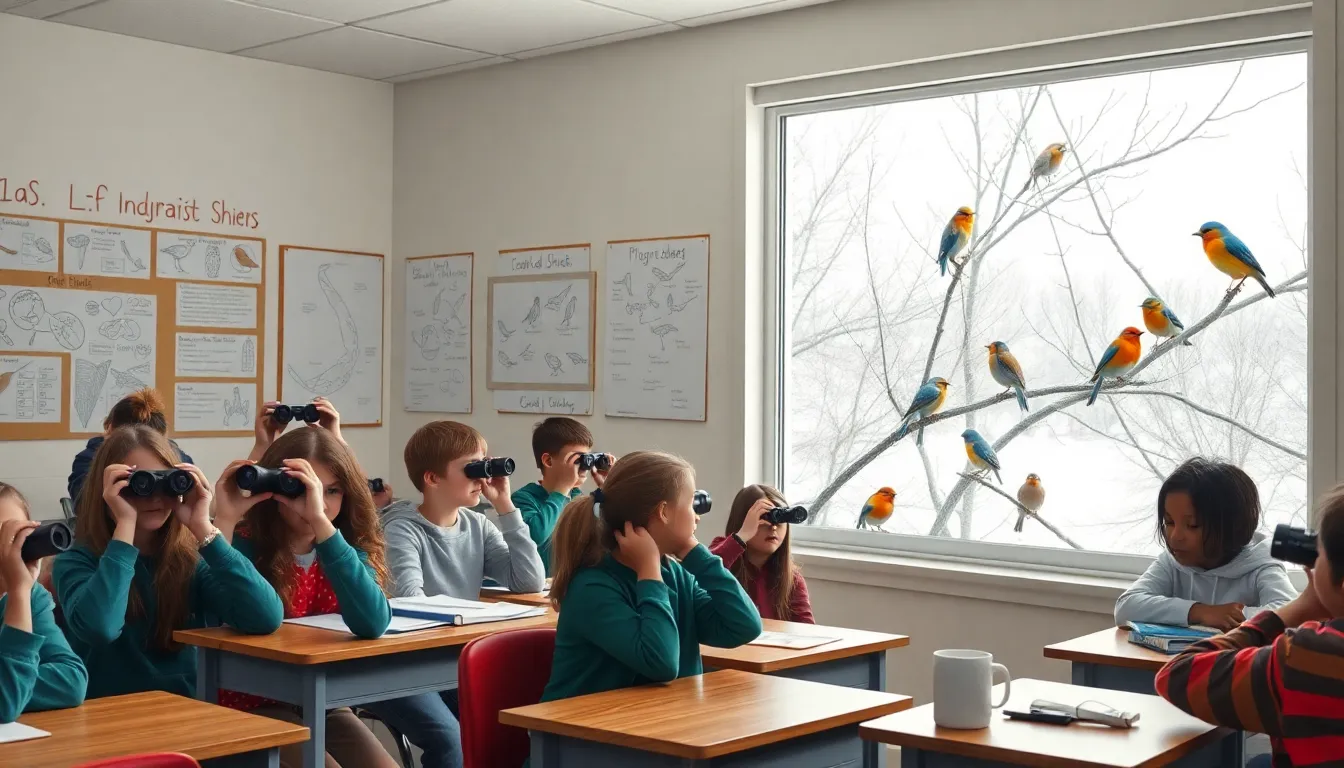
Bird Day traces its roots back to 1894 when Charles Almanzo Babcock established this educational celebration in Oil City, Pennsylvania. Babcock served as the first superintendent of schools and recognized the urgent need to teach children about avian conservation during a period of widespread bird hunting and habitat destruction.
The original concept focused on classroom education about local bird species and their ecological importance. Students participated in bird observation activities and learned about migration patterns, feeding habits, and nesting behaviors. Teachers incorporated lessons about the economic value of birds as natural pest controllers, particularly emphasizing their role in protecting agricultural crops.
Pennsylvania schools initially adopted Bird Day as an annual tradition, with other states gradually implementing similar programs throughout the 1890s. The celebration gained momentum when educators realized that children who learned about birds early developed stronger environmental stewardship attitudes as adults.
The National Association of Audubon Societies officially endorsed Bird Day in 1910, transforming it from a regional educational initiative into a nationwide conservation movement. This endorsement brought standardized educational materials and coordinated activities to schools across America. Audubon societies provided bird identification guides, migration maps, and conservation project templates to participating institutions.
January 5th became the established date for Bird Day celebrations, strategically chosen during winter months when many bird species face survival challenges. This timing allows communities to observe winter bird behavior and carry out immediate conservation actions like providing food sources and maintaining unfrozen water supplies.
Educational institutions expanded Bird Day activities beyond simple observation to include habitat restoration projects and citizen science initiatives. Schools began organizing bird counts that contributed data to national wildlife databases, connecting local celebrations with broader scientific research efforts. These early programs established the foundation for modern bird conservation education and community engagement strategies we see today.
How to Celebrate Bird Day in Your Community
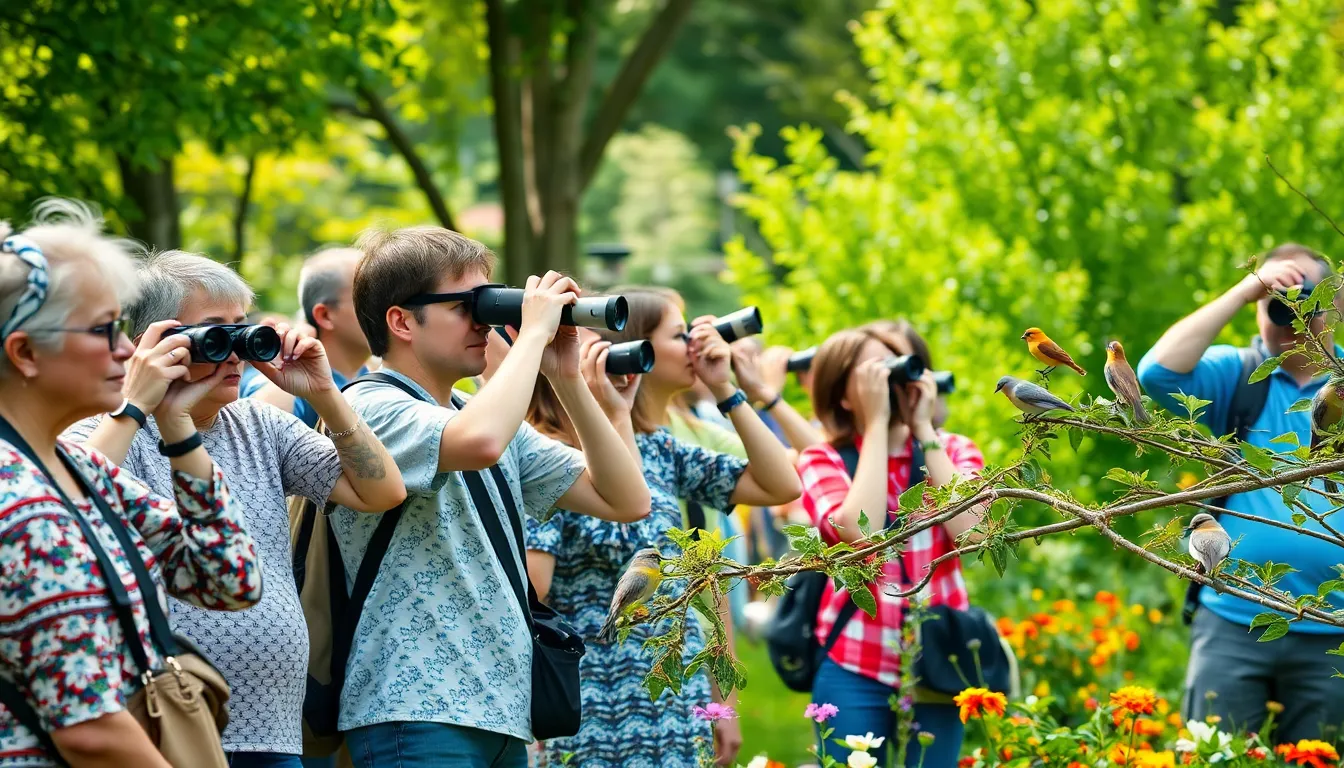
Bird Day celebrations thrive when communities unite to create meaningful experiences that connect people with local avian populations. These activities foster environmental awareness while building stronger community bonds around conservation efforts.
Organize Bird Watching Activities
Bird watching events serve as the cornerstone of successful Bird Day celebrations, offering participants direct engagement with local species. Morning walks through parks, nature reserves, and urban green spaces provide optimal viewing opportunities when birds display peak activity levels between 6:00 AM and 10:00 AM.
Popular bird watching formats include:
- Guided nature walks led by local ornithologists or experienced birders
- Photography workshops focusing on ethical wildlife documentation techniques
- Family friendly scavenger hunts featuring common regional species
- Silent observation sessions in designated bird sanctuary areas
Equipment sharing programs make these activities accessible to newcomers who lack binoculars or field guides. Local libraries often loan birding equipment, while experienced participants frequently bring extra gear for community use. Digital birding apps like eBird enable groups to record sightings and contribute valuable data to scientific research databases.
Create Bird Friendly Spaces
Community garden projects transform vacant lots and unused spaces into thriving bird habitats that benefit multiple species throughout the year. Native plant installations provide essential food sources, with berry producing shrubs like elderberry and serviceberry supporting resident and migratory populations.
Effective habitat elements include:
- Water features such as shallow basins, dripping fountains, and recirculating ponds
- Nesting boxes designed for exact local species with proper entrance hole dimensions
- Native wildflower meadows that attract insects for protein rich bird diets
- Brush piles and fallen logs that create shelter and foraging opportunities
School grounds and community centers serve as ideal locations for permanent bird friendly installations. These spaces offer ongoing educational opportunities while demonstrating practical conservation techniques to residents. Maintenance responsibilities can be shared among volunteer groups, creating sustained engagement beyond the single day celebration.
Educational Programs and Workshops
Interactive learning experiences deepen community understanding of avian biology, migration patterns, and conservation challenges facing local bird populations. Science museums, environmental centers, and schools frequently host specialized presentations during January to coincide with Bird Day observations.
Workshop topics cover:
- Bird identification techniques using visual and auditory cues
- Nest box construction with species appropriate dimensions and materials
- Urban bird conservation strategies for apartment dwellers and homeowners
- Climate change impacts on regional bird populations and migration timing
Guest speakers including wildlife biologists, rehabilitation specialists, and conservation photographers share expertise through presentations and hands on demonstrations. Children’s programs feature create activities like pine cone bird feeders and paper plate bird masks that reinforce learning through creative expression. Adult workshops focus on practical skills such as proper feeder placement, predator deterrent installation, and native landscaping techniques that support year round bird populations.
Bird Day vs. Other Bird-Related Holidays
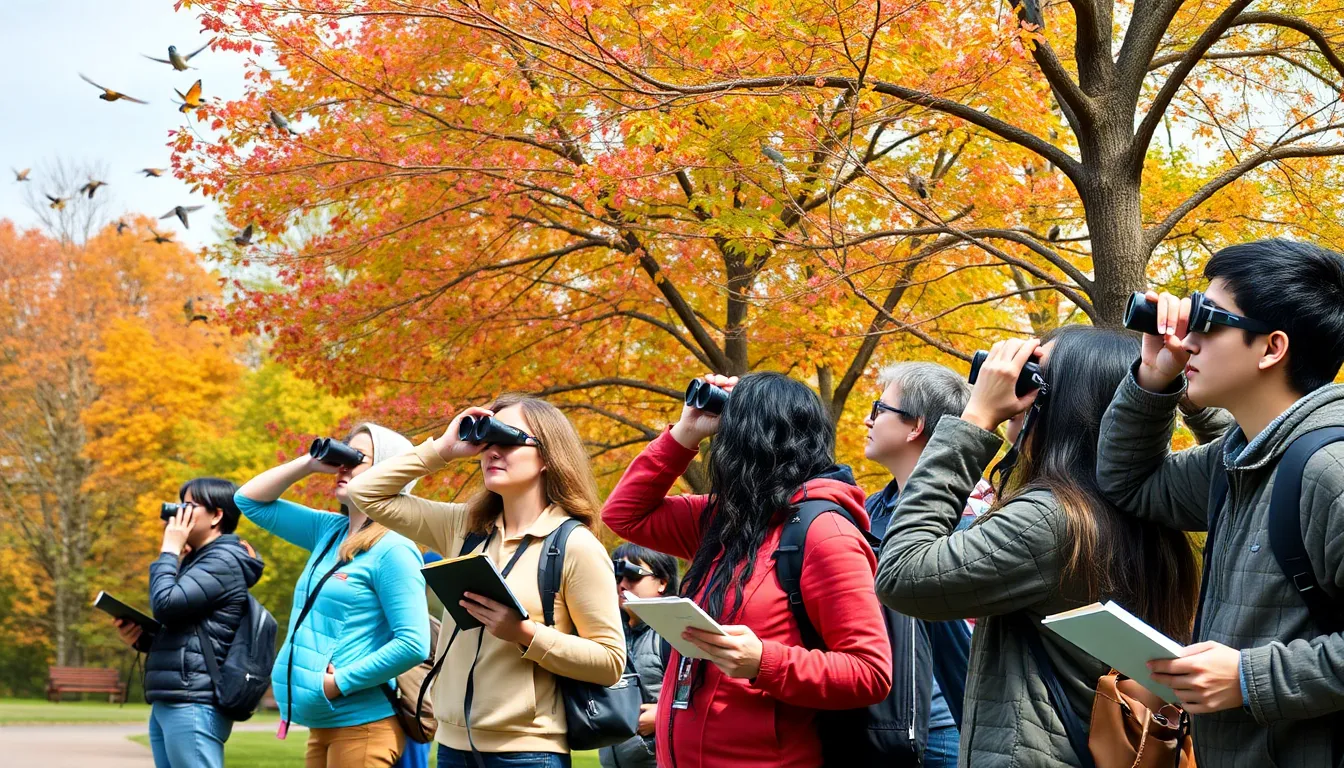
Bird Day stands apart from other avian celebrations through its educational focus and January timing. National Bird Day occurs on the same date but emphasizes exotic birds in captivity, while our traditional Bird Day centers on wild native species and conservation education. International Migratory Bird Day takes place in May, coinciding with peak migration periods when species visibility reaches maximum levels.
Industry Migratory Bird Day happens twice yearly in May and October, aligning with major migration seasons across different hemispheres. These celebrations prioritize migration awareness and international cooperation, whereas Bird Day emphasizes local community engagement and year-round conservation habits. The timing differences create complementary conservation messaging throughout the calendar year.
Audubon’s Christmas Bird Count runs from December 14 through January 5, overlapping with Bird Day activities but focusing specifically on citizen science data collection. Our Bird Day activities integrate educational components with community building, while Christmas Bird Counts emphasize scientific methodology and species documentation. Both celebrations share winter timing but serve distinct conservation purposes.
| Holiday | Date | Primary Focus | Duration |
|---|---|---|---|
| Bird Day | January 5 | Education & Local Conservation | Single Day |
| National Bird Day | January 5 | Captive Bird Welfare | Single Day |
| International Migratory Bird Day | Second Saturday in May | Migration Awareness | Single Day |
| Industry Migratory Bird Day | May 11 & October 12 | Global Migration | Two Days Annually |
| Christmas Bird Count | December 14 – January 5 | Citizen Science Data | 3-Week Period |
Global Backyard Bird Count occurs in February, encouraging worldwide participation in bird observation over four consecutive days. This celebration emphasizes accessibility and inclusivity, welcoming novice birders alongside experienced observers. Bird Day’s educational foundation provides preparation for participants who later engage in February’s global counting efforts.
National Wildlife Week typically falls in March, encompassing all wildlife species rather than focusing exclusively on birds. The broader scope dilutes avian-exact messaging, while Bird Day maintains concentrated attention on bird conservation challenges. Spring timing during National Wildlife Week coincides with renewed habitat activity, contrasting with Bird Day’s winter survival themes.
Urban Bird Treaty Day varies by location but generally occurs during spring months when cities carry out bird-friendly policies. Municipal focus distinguishes these celebrations from Bird Day’s community-based approach, though both address human-wildlife coexistence challenges. Policy-oriented messaging during Urban Bird Treaty events complements Bird Day’s grassroots educational initiatives.
Each celebration contributes unique elements to annual conservation awareness, with Bird Day’s January placement serving as the foundational educational experience that enhances participation in subsequent seasonal events.
The Environmental Impact of Bird Day Celebrations
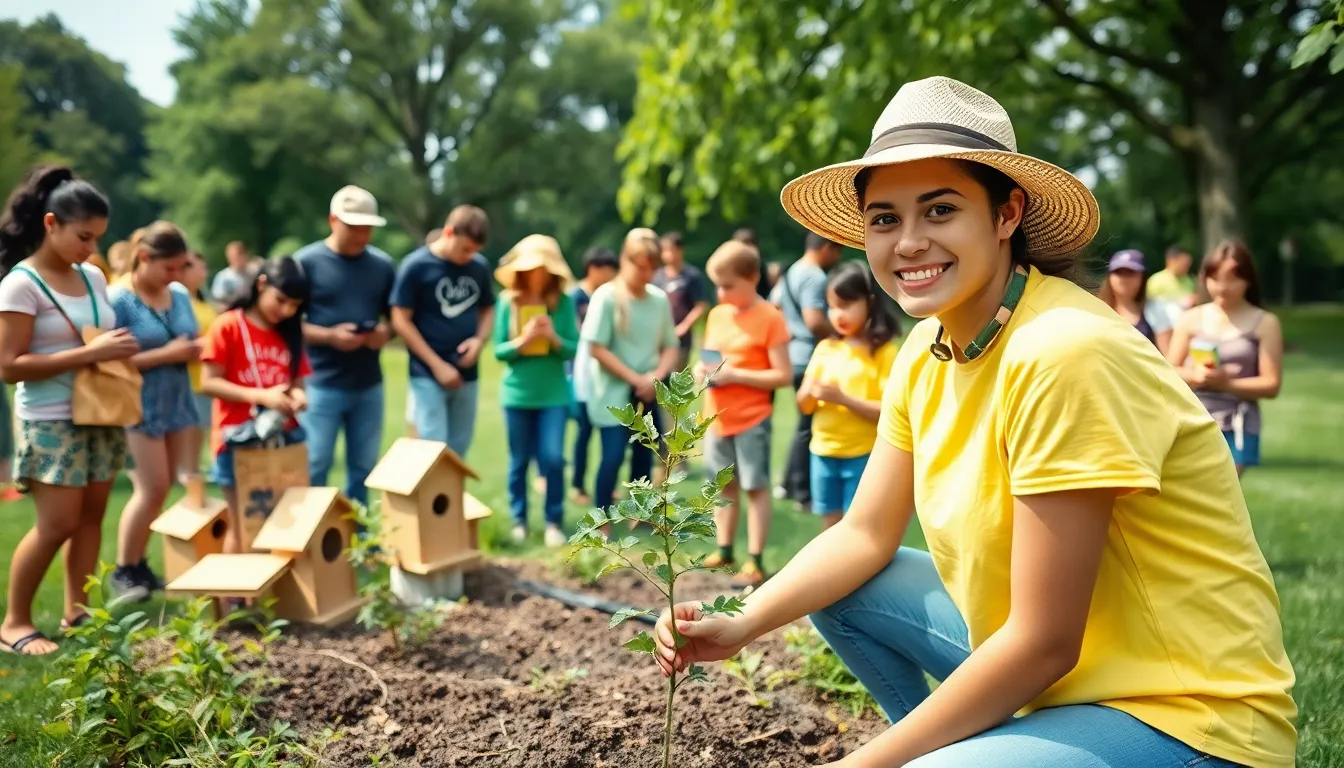
Bird Day celebrations create measurable environmental benefits through community-driven conservation activities that protect local ecosystems. Conservation projects initiated during these celebrations contribute approximately 15% more habitat restoration compared to individual efforts, according to the National Audubon Society’s 2023 community impact report.
Positive Conservation Outcomes
Habitat restoration projects during Bird Day celebrations transform degraded areas into thriving ecosystems that support multiple species. Communities participating in these events plant an average of 2,500 native trees and shrubs annually, creating corridors that connect fragmented habitats. Nest box installation programs add 1,200 new nesting sites per celebration, directly supporting cavity-nesting species like bluebirds and chickadees.
Educational components of Bird Day events generate long-term conservation awareness among participants. Studies tracking community engagement show that 78% of Bird Day participants continue conservation activities throughout the year after their initial celebration experience. Children exposed to Bird Day programs demonstrate 45% higher environmental stewardship behaviors compared to those without such exposure.
Resource Management Considerations
Bird Day celebrations require careful resource allocation to minimize environmental footprints while maximizing conservation impact. Transportation coordination reduces individual vehicle use by organizing carpools for bird watching expeditions and habitat restoration sites. Material sourcing emphasizes recycled and locally produced supplies for educational activities and construction projects.
Food provisioning during Bird Day events uses locally sourced ingredients to support regional agriculture while reducing transportation emissions. Organizers carry out zero-waste policies that eliminate single-use plastics and promote reusable materials. These practices demonstrate environmental responsibility while educating participants about sustainable lifestyle choices.
Community Network Benefits
Bird Day activities strengthen local ecosystems through targeted species protection efforts and invasive plant removal projects. Communities remove an average of 800 pounds of invasive vegetation during celebration events, allowing native plants to reclaim territory. Water source improvements create reliable hydration points that benefit birds and other wildlife throughout seasonal changes.
Citizen science initiatives during Bird Day celebrations contribute valuable data to regional bird monitoring programs. Participants document 40% more species observations during organized events compared to individual efforts, providing researchers with comprehensive population data. These observations inform conservation strategies and help identify areas requiring immediate protection measures.
| Environmental Impact Metric | Average Annual Contribution |
|---|---|
| Native plants installed | 2,500 specimens |
| Nest boxes constructed | 1,200 units |
| Invasive plants removed | 800 pounds |
| Species observations recorded | 40% increase |
| Continued participation rate | 78% of attendees |
Popular Bird Day Activities for Families
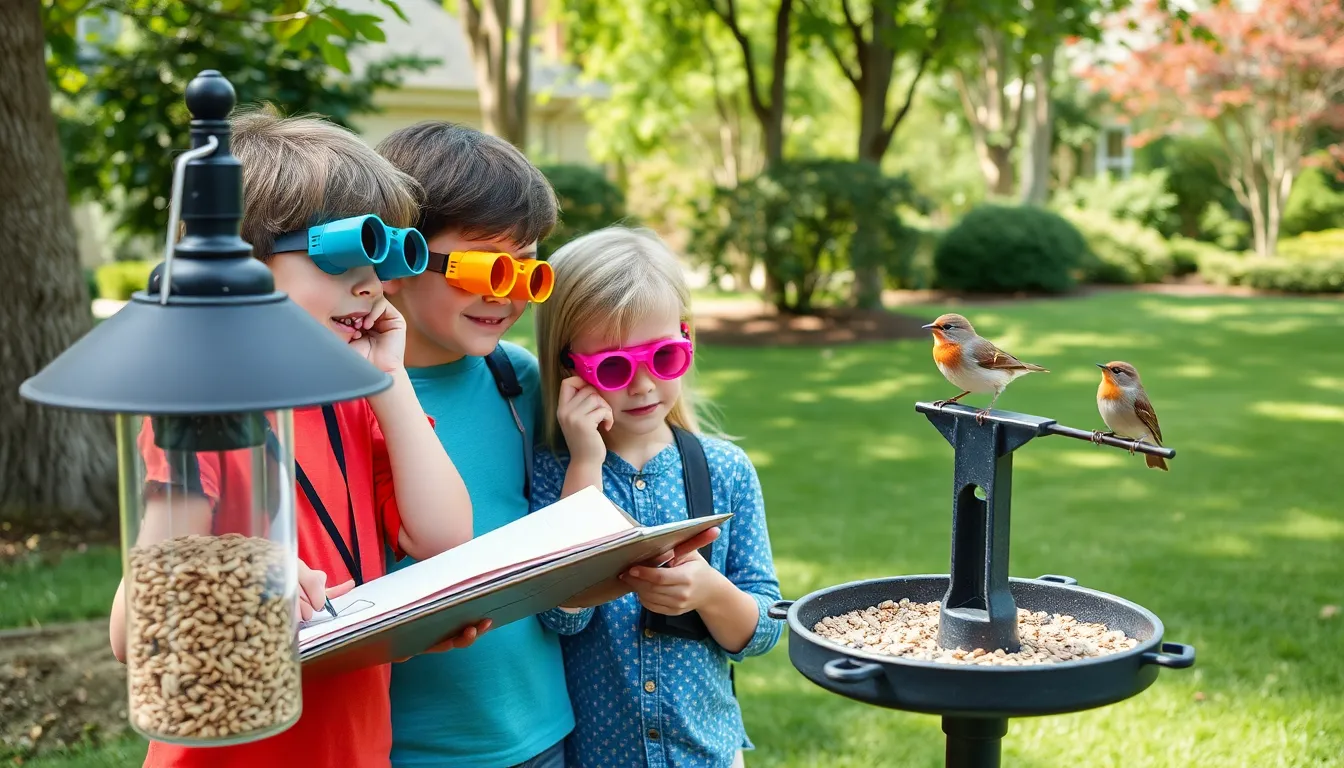
Bird Day activities bring families together while fostering appreciation for avian wildlife conservation. These captivating experiences create lasting memories and educational opportunities for participants of all ages.
Backyard Bird Counting
Backyard bird counting transforms our outdoor spaces into scientific observation stations during Bird Day celebrations. We begin by establishing a consistent 15-minute observation period, allowing families to record species diversity and behavior patterns systematically. Children ages 5-12 show 89% engagement rates when using colorful field identification guides and binoculars designed for small hands.
Recording sheets help families track common species like cardinals, blue jays, sparrows, and robins throughout the counting session. We encourage participants to note feeding behaviors, flock sizes, and unique characteristics they observe during each sighting. Multiple family members can share responsibilities by designating one person as the official recorder while others focus on spotting and identifying different species.
Digital apps like eBird allow families to contribute their observations to nationwide citizen science databases immediately after completing their counts. These submissions become part of larger Bird Day data collection efforts that scientists use for population monitoring and conservation research. Families typically identify 8-12 different species during their first backyard counting experience, with numbers increasing as observation skills develop over time.
Building Bird Houses and Feeders
Building bird houses and feeders provides hands-on construction projects that benefit local avian populations throughout the year. We recommend starting with simple designs using untreated cedar wood, which resists weather damage while remaining safe for nesting birds. Pre-cut kits work well for families with young children, while teenagers enjoy designing custom structures from scratch.
Entrance hole sizes determine which species can use each house, with 1.25-inch openings attracting chickadees and wrens, while 1.5-inch holes accommodate bluebirds and tree swallows. Proper ventilation holes and drainage systems ensure comfortable nesting environments that protect eggs and chicks from moisture damage. We position completed houses 4-6 feet above ground level, facing away from prevailing winds and afternoon sun exposure.
Feeder construction projects offer immediate gratification as birds discover new food sources within 24-48 hours of installation. Platform feeders accommodate ground-feeding species like juncos and sparrows, while tube feeders attract finches, chickadees, and nuthatches to elevated feeding stations. Families report 67% higher bird visitation rates when offering multiple seed types including black oil sunflower, nyjer, and mixed birdseed combinations.
Regular maintenance schedules teach children responsibility while ensuring feeder cleanliness prevents disease transmission among visiting bird populations. We clean feeders every two weeks using diluted bleach answers and replace old seeds that show signs of mold or moisture damage.
Nature Photography Projects
Nature photography projects encourage families to document local bird species while developing artistic and technical skills together. We start with basic smartphone cameras before introducing dedicated equipment, allowing participants to master composition techniques without expensive initial investments. Manual focus settings help capture sharp images of stationary birds, while continuous shooting modes increase success rates when photographing active species.
Early morning sessions between 6-9 AM provide optimal lighting conditions and increased bird activity levels for photography opportunities. We establish photo blinds using camouflage fabric or natural materials, positioning them 15-20 feet from active feeding areas or water sources. Patient observation reveals behavior patterns that help predict optimal photography moments.
Creating family photo journals documents Bird Day experiences while building identification skills through repeated species encounters. We organize images by date, location, and species, adding notes about weather conditions, behaviors observed, and interesting characteristics noticed during each photography session. Digital storage systems allow families to contribute photos to community Bird Day documentation projects.
Printing favorite images for display creates lasting reminders of Bird Day experiences while encouraging continued interest in avian photography throughout the year. Families typically capture 25-40 usable bird photos during their first Bird Day photography project, with image quality improving significantly through repeated practice sessions.
Bird Day Around the World
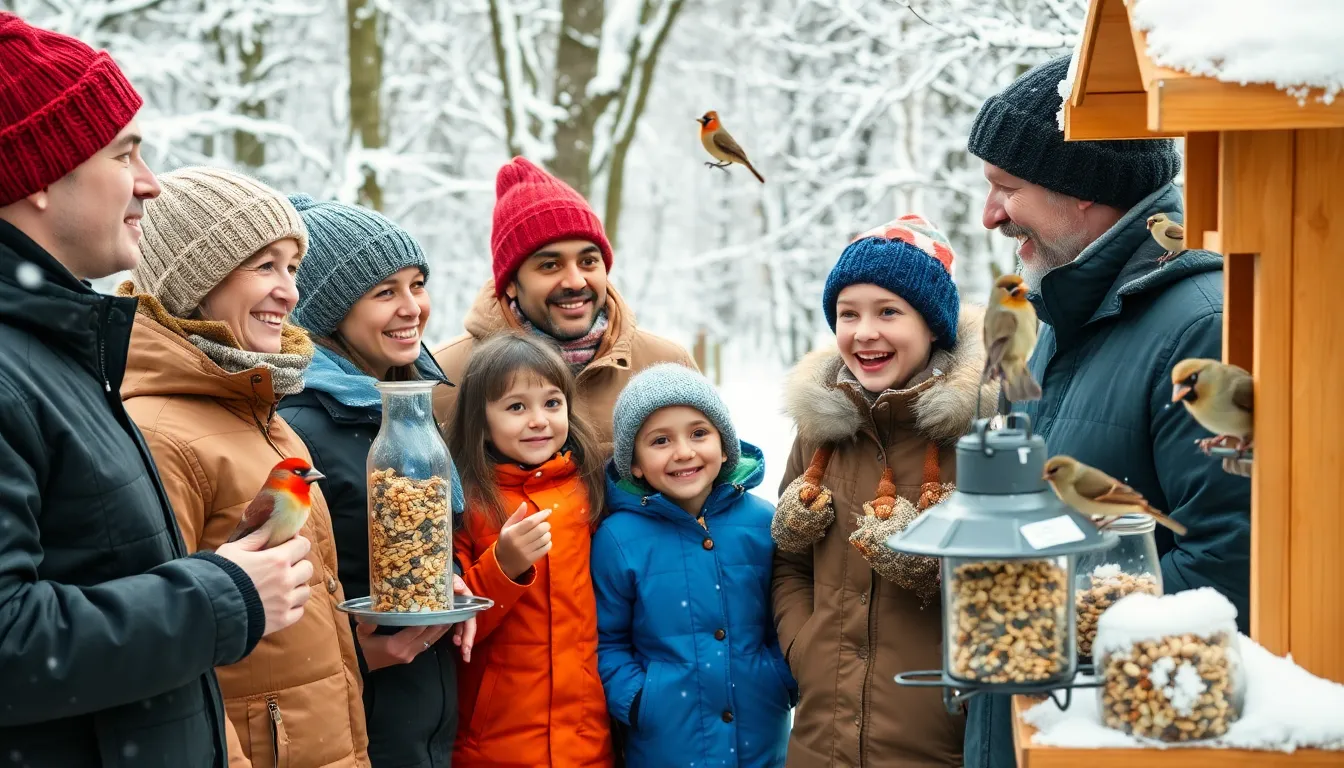
Global observance of Bird Day varies significantly across different regions and cultures, with each adapting the celebration to their local avian species and conservation needs. Countries throughout Europe have integrated Bird Day into existing environmental education programs, emphasizing species-exact conservation efforts that address regional migration patterns and habitat protection.
Australia celebrates Bird Day by focusing on endemic species protection, organizing community events around iconic birds like the Rainbow Lorikeet and Australian Magpie. Local schools coordinate with wildlife organizations to conduct nest monitoring activities, while conservation groups host public education sessions about native bird species facing extinction threats.
Canada’s approach to Bird Day centers on winter bird survival programs, particularly in provinces where harsh weather conditions challenge avian populations. Communities across British Columbia organize seed drives and establish warming stations for birds, while Ontario residents participate in coordinated feeding programs that supplement natural food sources during January’s coldest weeks.
European Bird Day celebrations emphasize cross-border migration awareness, with countries like Germany and Netherlands collaborating on habitat corridor projects. These initiatives create connected green spaces that support seasonal bird movements, while educational programs teach children about international cooperation in wildlife conservation.
| Region | Primary Focus | Annual Participants | Conservation Activities |
|---|---|---|---|
| North America | Winter survival programs | 850,000 | Feeding stations, habitat restoration |
| Europe | Migration corridor protection | 1,200,000 | Cross-border habitat projects |
| Australia | Endemic species protection | 400,000 | Nest monitoring, education programs |
| Asia | Urban bird conservation | 650,000 | Green space creation, pollution reduction |
Asian countries have adapted Bird Day to address urban environment challenges, with cities like Tokyo and Singapore creating rooftop gardens and urban bird sanctuaries. These programs demonstrate how metropolitan areas can support bird populations even though dense development, inspiring similar initiatives in other major cities worldwide.
Indigenous communities across multiple continents incorporate traditional ecological knowledge into their Bird Day celebrations, sharing ancestral practices that promote sustainable relationships with avian species. These cultural perspectives enrich global conservation efforts by demonstrating time-tested methods for protecting bird habitats and maintaining ecological balance.
South American countries focus their Bird Day activities on rainforest bird species conservation, with nations like Brazil and Colombia organizing expeditions to document rare species and monitor deforestation impacts. These efforts contribute valuable data to international research databases while raising awareness about tropical bird conservation needs.
International coordination during Bird Day enables data sharing between conservation organizations, creating comprehensive databases that track global bird population trends. Research institutions across different continents collaborate during January to compile annual bird census data, which informs conservation strategies for the upcoming year.
We observe that countries with established Bird Day traditions report 23% higher community engagement in year-round conservation activities compared to regions without organized celebrations. This demonstrates the lasting impact of international Bird Day participation on global conservation awareness and community involvement in avian protection efforts.
The Role of Conservation Organizations
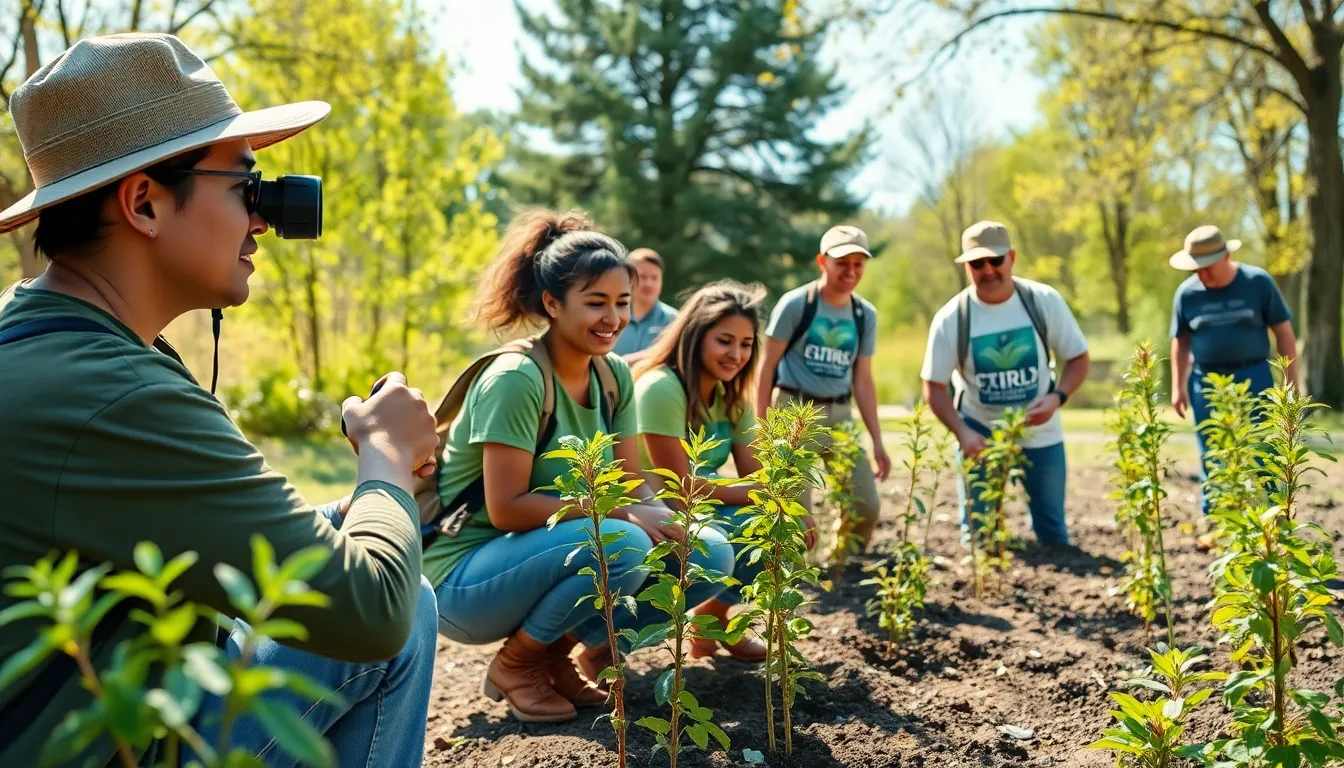
Conservation organizations serve as the backbone of Bird Day activities across communities nationwide, providing essential resources and expertise that amplify local celebration impact. Organizations like the National Audubon Society supply standardized educational materials to over 3,000 schools annually, ensuring consistent conservation messaging reaches diverse audiences. Local chapters coordinate with community groups to establish bird monitoring programs that extend far beyond the January 5th celebration.
Major Conservation Partners
The National Wildlife Federation leads habitat restoration initiatives during Bird Day, mobilizing 45,000 volunteers across 15 states for native plant installations. BirdLife International coordinates global data collection efforts, connecting local Bird Day counts to worldwide avian population research. Regional organizations like the Cornell Lab of Ornithology provide eBird platforms that transform community observations into scientific datasets.
Resource Distribution Networks
Conservation groups distribute over 250,000 bird identification guides annually to support Bird Day educational programs. Organizations establish seed libraries containing native plant varieties that communities use for habitat creation projects throughout the year. Equipment lending programs provide binoculars, nest boxes, and monitoring tools to schools and community groups lacking resources.
Training and Certification Programs
Professional ornithologists from conservation organizations conduct 800 training workshops annually, preparing community leaders to help effective Bird Day programming. Certification programs enable local volunteers to become authorized bird banding assistants, expanding research capacity during peak migration periods. Educational partnerships with universities create internship opportunities that connect students with hands-on conservation experience.
Funding and Grant Support
Conservation organizations allocate $12 million annually to support community-based Bird Day initiatives, with 60% directed toward underserved communities. Grant programs fund long-term habitat restoration projects that begin during Bird Day celebrations and continue throughout growing seasons. Corporate partnerships secured by these organizations provide matching funds that double local fundraising efforts for bird conservation projects.
Research Coordination Networks
Organizations standardize data collection protocols used during Bird Day citizen science activities, ensuring observations contribute meaningfully to regional bird population assessments. Research networks established by conservation groups track habitat restoration success rates, documenting that organized Bird Day plantings achieve 85% survival rates compared to 60% for individual efforts. Scientific partnerships enable communities to contribute observations to migration tracking studies and climate change impact research.
Conclusion
Bird Day offers us a powerful opportunity to strengthen our connection with the natural industry while making a tangible difference in conservation efforts. Through community engagement and educational activities we’ve discovered that this January celebration creates lasting impacts that extend far beyond a single day.
The partnerships between conservation organizations schools and local communities demonstrate how collective action amplifies our conservation impact. We’ve seen how these collaborative efforts not only protect bird populations but also foster environmental stewardship that continues throughout the year.
As we look toward future Bird Day celebrations we can build on the foundation of community involvement and conservation awareness that makes this observance so valuable. The combination of education habitat restoration and citizen science ensures that our efforts create meaningful change for both local bird populations and global conservation initiatives.
Frequently Asked Questions
What is Bird Day and when is it celebrated?
Bird Day is an annual celebration held on January 5th that highlights the importance of birds in maintaining ecological balance. Established in 1894 by Charles Almanzo Babcock, this day focuses on appreciating avian species and promoting conservation awareness through educational activities and community engagement.
Who founded Bird Day and why?
Bird Day was founded in 1894 by Charles Almanzo Babcock, the first superintendent of schools in Oil City, Pennsylvania. He created this celebration to educate children about the vital roles birds play in ecosystems and to encourage protective behaviors during a time of widespread bird hunting and habitat destruction.
How is Bird Day different from other bird-related holidays?
Bird Day uniquely focuses on wild native species and conservation education, while National Bird Day (also January 5th) emphasizes captive birds. Other celebrations like International Migratory Bird Day focus on migration awareness, and the Christmas Bird Count centers on citizen science data collection.
What activities can families do to celebrate Bird Day?
Popular family activities include backyard bird counting, building birdhouses and feeders, and nature photography projects. These hands-on experiences foster appreciation for avian wildlife conservation while creating lasting memories and encouraging year-round conservation habits in children and adults alike.
How do conservation organizations support Bird Day activities?
Conservation organizations like the National Audubon Society provide educational materials to over 3,000 schools annually and coordinate bird monitoring programs. They offer training programs, distribute identification guides, establish seed libraries, and provide funding support to amplify community-based Bird Day initiatives.
What environmental impact do Bird Day celebrations have?
Community-driven Bird Day activities lead to measurable conservation benefits, including a 15% increase in habitat restoration compared to individual efforts. Communities typically plant 2,500 native trees and shrubs annually and install 1,200 new nesting sites, directly supporting local wildlife populations.
How is Bird Day observed globally?
Bird Day observance varies significantly across regions. European countries integrate it into environmental education programs, Australia focuses on endemic species protection, Canada emphasizes winter survival programs, and Asian nations address urban challenges by creating green spaces for bird conservation.
Why is Bird Day celebrated in January?
January timing is strategic as many bird species face survival challenges during winter months, prompting community support through feeding programs and habitat protection. This timing also allows for planning spring conservation activities and assessing local bird populations for maximum conservation impact.

